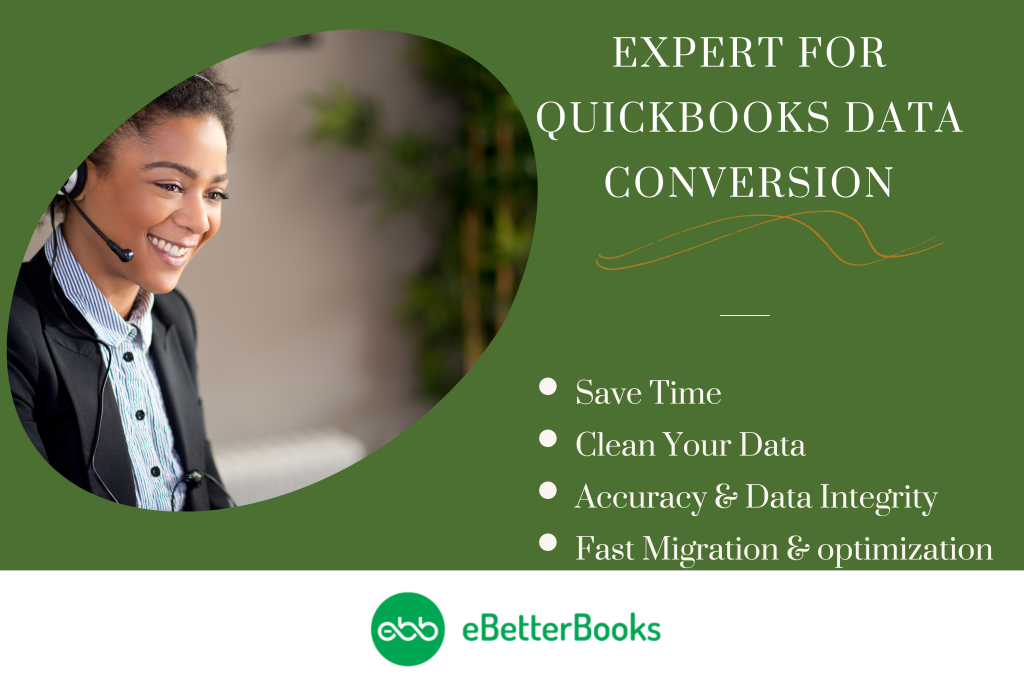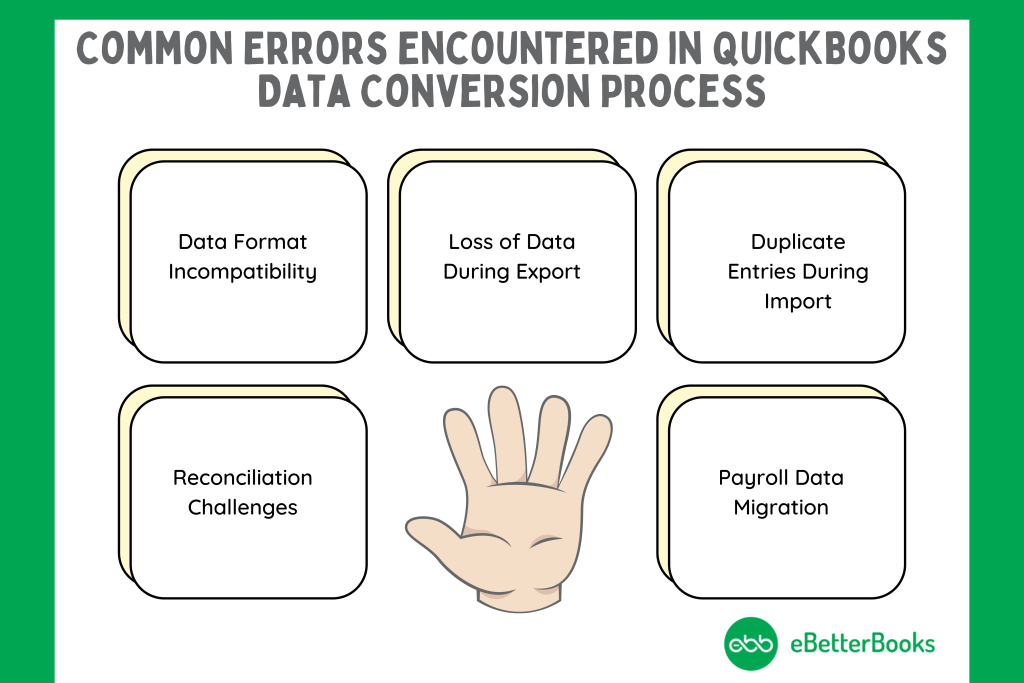Switching from one software to another is a critical decision for every organization as there is the need to change to better features or growth capability or functionality. This article outlines all the important things that you ought to know and do when planning to migrate from Xero to QuickBooks.
From exporting and preparing your data to figuring out costs for setting up your new system, this article offers all the information you need to make the switch to QuickBooks without a hitch in your business.
Xero and QuickBooks are both popular accounting software options, but QuickBooks offers more robust features and capabilities than Xero. QuickBooks is widely used for its comprehensive accounting tools, customizable reports, and user-friendly interface.
Xero is a cloud-based accounting software that serves users, including freelancers, startups, and small businesses looking for easy-to-use accounting solutions. However, Xero has limitations in terms of scalability, customization options, and customer support.
QuickBooks, on the other hand, is preferred by a wider range of businesses, from small startups to large enterprises. Its target users include businesses of all sizes and industries looking for advanced accounting features, customizable reports, and seamless integration with other business tools.
QuickBooks offers different versions, such as:
- QuickBooks Online
- QuickBooks Desktop
- QuickBooks Desktop Pro
- QuickBooks Desktop Premier
- QuickBooks Enterprise
Migration from Xero to QuickBooks
Xero users often face complexity in using it, as they find it easy to install but time-consuming to fully grasp its functionality and utilize it effectively. They also consider that purchase and inventory management is very basic, which necessitates them to convert to QuickBooks for more comprehensive accounting solutions.
In contrast, QuickBooks is mostly preferred for its advanced features, such as record-keeping, easy data migration, and much more.
While QuickBooks offers extensive features and benefits, like any software, it also has limitations, such as restrictions on the number of users, limited invoice design tools, and constraints in handling very large datasets.
Nonetheless, QuickBooks remains a reliable and preferred choice for businesses seeking efficient accounting solutions.
QuickBooks Data Conversion: All About QuickBooks
QuickBooks (QB) stands out as a versatile solution that offers both desktop and cloud-based versions to serve diverse business needs. QuickBooks Desktop (QBD) comes in several versions, each tailored to specific business requirements.
- QuickBooks Pro is ideal for small businesses.
- QuickBooks Premier offers an industry-specific version for enhanced functionality.
- QuickBooks Enterprise Solutions serves larger businesses with advanced features and scalability.
QuickBooks Desktop includes advanced accounting features such as expense management, a customizable dashboard, and offline access to financial data, ensuring seamless operations and data control.
QuickBooks Online (QBO) provides the ease of cloud-based accounting, allowing users to access their financial data anytime, anywhere. With QBO, businesses can collaborate in real-time, enjoy automatic updates and backups, and streamline workflow processes.
Ultimately, whether to choose QuickBooks Desktop or Online depends on the business’s specific needs and preferences. QuickBooks Desktop offers extensive features and control over data, while QuickBooks Online provides accessibility and collaboration features, ensuring businesses have the tools they need to expand.
Why You Need an Expert to Switch from Xero to QuickBooks Conversion

Xero to QuickBooks Data Conversion: Checklist
By adhering to this detailed checklist, businesses can efficiently navigate the conversion process and gain a comprehensive understanding of QuickBooks’s complete capabilities for managing their finances.
- QuickBooks Integrations: Prioritize integration options such as Payroll and Time Tracking to streamline business processes post-conversion.
- Browser Requirements: Ensure stable internet access and utilize Google Chrome for optimal compatibility during the conversion process.
- Xero Installation: Install Xero on the same computer as QuickBooks to facilitate seamless data transfer between the two systems.
- Operating System Compatibility: Verify that your system runs on Windows 8, Windows 10, or Windows 11 to effectively support the conversion process.
- Processor Requirement: Maintain a minimum of a 500 MHz Intel Pentium II processor to ensure efficient handling of conversion tasks.
- Memory (RAM) Requirement: Allocate at least 512 MB of RAM to support the conversion process and prevent system slowdowns.
- Microsoft .NET Framework: Ensure that Microsoft .NET Framework Version 2.0 is installed on your system as a minimum requirement for compatibility with conversion tools.
- Xero Version: Use Xero Version 2013 or above to facilitate the conversion process without encountering compatibility issues.
- Hard Drive Space: Allocate a minimum of 2.5 GB of free space on your hard drive to accommodate conversion files and ensure smooth operation.
- QuickBooks Compatibility: Verify compatibility with QuickBooks Desktop Pro, Premier, or Enterprise editions to ensure seamless conversion and functionality post-migration.
- Cross-Region Conversions: The QuickBooks Data Conversion tool cannot be used for cross-region conversions, ensuring compliance with data protection regulations.
- Storage Considerations: Ensure that the computer’s hard drive has sufficient space to store both the QuickBooks Database and associated files of Xero for efficient data management.
Process of Converting Xero to QuickBooks
Step #1: Chart of Account Conversion
For this, you need to set up the Chart of Accounts (COA) in QuickBooks Online (QBO) to match it with Xero.
- Export the COA from Xero.
- Simply go to Settings > Chart of Accounts > Export.
- Download the CSV file and open it with Excel or another spreadsheet program to make edits.
Xero accounts have three-digit numbers with no subaccounts, but you can group accounts under a category or heading account by adding digits after a hyphen (e.g., 510-01, 510-02). When importing into QBO, you can include four columns of information:
- Account number
- Account name
- Account type
- Detail type.
Step #2: Import Vendor & Customer Details into QuickBooks
When migrating customer and vendor information to QuickBooks Online (QBO), begin by acknowledging that Xero considers both customer and vendor contacts without distinguishing between them. To facilitate the import process, export these contacts together and subsequently separate them for import into QBO. Ensure that addresses are adjusted and formatted correctly for a successful import. You can download the import format from QBO’s Import Data option, accessible via the Gear Icon > Tools menu.
Step #3: Import Products & Services into QuickBooks
When importing products and services into QuickBooks Online (QBO), begin by examining the items listed on Xero’s inventory page. Organize these items suitably for various transaction types, such as bills and invoices.
Modify the export file to align with QBO’s import format. For effective inventory tracking, verify the accuracy of buying costs and quantities. Additionally, ensure that you select the appropriate checkboxes for each item.
Step #4: Import Bill Transactions & Invoices into QuickBooks
Transfer transactions to QuickBooks by importing up to 500 bills or invoices at a time. For more files, split them by date. Use a third-party program for seamless integration.
Step #5: Import Payroll Transactions into QuickBooks
First, import payroll transactions and then bank transactions.
Step #6: Import Bank Transactions into QuickBooks
Importing bank transactions is complex due to accounting software. Exporting general ledger transactions requires formatting manipulation. Use QBO’s Bank Feed function, which is compatible with Xero, to classify and match transactions efficiently.
Step #7: Verify the Results
Now, review and verify the results from the Xero file. You may need to do some editing work due to change of format in QuickBooks.
Know What you can Convert or What you Cannot!
Here’s a list of what can be transferred to QuickBooks Desktop or what not:
What Can Be Converted?
- Customer Lists & Transactions
- Vendor Lists & Transactions
- Inventory Details
- Account Lists
- Account Balances
- Employee profile and contact info
- Paychecks
- Accounts Receivable and Accounts Payable
- Profit & Loss
- Monthly Balance Sheets
- Value Addition Conversion (also get):
- Attachments
- Fiscal Data up to 3 years
- Unreconciled Transactions
- Company information (Address, Email, Phone Number etc)Invoices or Bills against Credit Notes
What Cannot Be Converted?
- Assembly builds
- Budgets
- Memorized transactions
- Deleted transactions
- Draft or unposted journals
- Jobs that are not attached to transactions
- Closed or partially closed estimates and purchase orders
- Bank reconciliation history
- File attachments
- Invoice Template and other templates
- Terms list
- Employees list
- Payroll information, if any (employee details, pay calendars, tax information and pension, etc.)Project details, if any (quotes and estimates, tasks and expenses, profitability, etc.)Fixed assets management
Common Errors Encountered in QuickBooks Data Conversion Process

When converting from Xero to QuickBooks Online, there are several common challenges that businesses may encounter.
Let’s explore these challenges and how to address them:
- Data Format Incompatibility: The data formats used by Xero and QuickBooks Online may differ, leading to compatibility issues during migration.
- Potential Loss of Data During Export: During the export process, there’s a risk of losing some data points.
- Duplicate Entries During Import: Duplicate transactions or entries may occur when importing data into QuickBooks Online.
- Reconciliation Challenges: Reconciling bank accounts, invoices, and other financial records can be complex during the transition.
- Payroll Data Migration: Migrating payroll data can be tricky due to differences in payroll processing between Xero and QuickBooks Online.
Costs of Converting Xero To QuickBooks
There are several factors to consider before transitioning from Xero to QuickBooks.
These may include:
- Subscription Fees: QuickBooks Online has many price levels, which are elaborated below. In the context of subscriptions, you can register for a specific plan that will cost you between $15 and $200 monthly.
- Migration Services: Nevertheless, many professional migration services can help make the transition easier. These agencies’ expenses differ; however, they might cost between $200 and $1 000, depending on the number of data and its complexity.
- Third-Party Tools: Some third-party tools/applications, like Excel-based import tools, may attract additional costs if they are used for conversion.
- Training and Support: Taking your team through a training session on the functional use of QuickBooks Online adds to the expenses because you may hire professional trainers or use paid tutorials.
- Downtime and Productivity Loss: It is not a direct payment of money, but the time needed to complete the change and get used to the new environment will marginally diminish productivity rates for a while.
- Customization and Add-Ons: Depending on the certain features your business needs for operation that are not included in the QuickBooks plans above, you might need to look for third-party additions or applications, which will cost extra money.
Knowledge of these costs will assist you in planning and making the transition from Xero to QuickBooks Online seamless.
Conclusion
The process of converting data from Xero to QuickBooks includes several essential steps. Initially, data is extracted from Xero. Next, it undergoes transformation to ensure compatibility with QuickBooks. During this stage, field mapping is crucial to align corresponding data elements. Additionally, addressing data discrepancies and maintaining data integrity are key tasks. Successfully executing this process results in a seamless transition, allowing businesses to effectively utilize QuickBooks for financial management and reporting.
FAQs
How Easy is it to Switch from Xero to QuickBooks?
It is quite easy to transition from using Xero to QuickBooks, provided one is well prepared to do so. Two features both platforms have in common are the data export and Import features. It is notable that for complicated data structures, there are also specific migration services available for businesses.
Why Choose QuickBooks Over Xero?
QuickBooks comes equipped with extensive features, including advanced reporting, payroll, and integration, as well as thousands of apps. It is suitable for businesses that require expansion since QuickBooks is famous for bookkeeping for corporations in the United States.
Do Accountants Prefer QuickBooks?
Most accountants choose QuickBooks because it is easy to use, has many features, and is easily integrated with other applications. This makes it among the most preferred accounting platforms globally, celebrated for enhancing collaboration.
